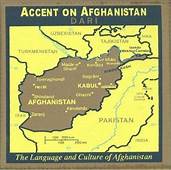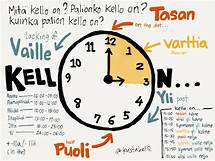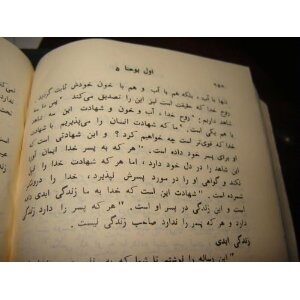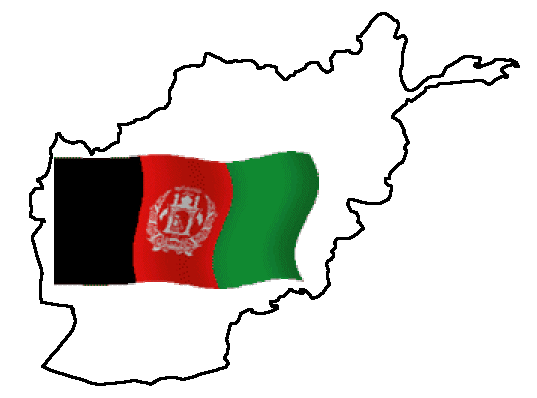Facts About the Afghanistan Language
Afghanistan is home to anything from 40 to 59 different languages. Dari and Pashto are the official and most generally spoken languages in Afghanistan, with 77 percent and 48 percent of the population speaking them, respectively. Dari, or Farsi, is the official name for the Persian dialect spoken in the country and is commonly used as a common language. Uzbeki (11 percent), English (6%), Turkmeni (3%), Urdu (3%), Pashai (1%), Nuristani (1%), Arabic (1%), and Balochi (1%), respectively, follow the two official languages (1 percent ).

TWB performed a survey of 65 community radio broadcasters in Afghanistan in 2020, representing a fourth of all community radio stations. The most common broadcasting languages, according to the report, are Dari and Pashto. Adverts, short audio clips, and sporadic language mixing in talk shows and call-in shows are the mainstays of broadcasts in foreign languages. Dedicated programs in another language that provide in-depth information are uncommon.
Pashto Facts: Interesting Facts

Is Pashto a language you’ve heard of?
Unfortunately, you’re not the only one who hasn’t. The majority of Americans are unaware of it, yet it is something we should be aware of. It’s the Pashtun language, which has been spoken in Afghanistan and Pakistan for thousands of years. The following are five fascinating Pashto facts.
1) The Pashto language is one of Afghanistan’s two official languages.
Dari, which is related to Persian, is the other language. For millennia in Afghanistan, the two languages have coexisted. Pashto was once the primary language of the Pashtuns. The Afghan aristocracy, including the kings and governing class, spoke Dari.
Pashto became an essential emblem of Afghan identity during the 1920s and 1930s. As a result, members of the ruling elite started learning both languages. As a result, Pashto was proclaimed the official language of Afghanistan by King Zahir Shah in 1936.
Dari is vocalized by more than half of Afghans now, and the government widely employs it. However, while children’s education is offered in both languages, most universities only offer Dari courses.
2) Pashto speakers outnumber Dutch speakers by roughly two to one.
Pashto is expressed as a leading language by about 40 million people all over the world. In the meantime, just 22 million people speak Dutch as a native language.
The relative harmony among Dari and Pashto speakers is genuinely close.
As indicated by ongoing appraisals, about 50% of all Afghans talk some rendition of Dari, while more than 40% communicate in Pashto.
Dari — the main language of ethnic gatherings like the Tajiks, Hazaras, and Aimaqs — is by and large saw as the most widely used language in Afghanistan and has for some time been utilized for business and government exchanges. Pashto, then again, is the main language of the Pashtuns, who include Afghanistan’s biggest ethnic minority. It’s likewise fascinating to take note of that bilingualism and multilingualism are genuinely normal the nation over. For instance, numerous Pashtuns in metropolitan regions likewise speak Dari, while Dari-speaking Afghans with more significant levels of schooling frequently have a decent order of Pashto too.
Pashto is spoken by 25 million people in Pakistan, in addition to Afghans. Tajikistan has a small population that talks about the language. There are Pashto-speaking expat communities all over the world, of course.
3) The Arabic Naskh script is used to write Pashto.
Although Arabic and Pashto are linguistically distinct, you can mistake written Pashto for Arabic if you don’t speak either language because they employ nearly identical scripts. Because the languages are so dissimilar, Pashto utilizes a modified form of Naskh, with extra characters added to indicate sounds unique to Pashto but not to Arabic. It is why the Pashto script includes 44 letters instead of the conventional Arabic 28.
To accommodate the differing script, you may need to make some design adjustments while translating from English to Pashto. It’s also essential to use compatible typefaces. Display faults, on the other hand, can convert a good translation into gibberish.
4) Pashto dialects are divided into two or three groups.
Pashto dialects differ by geography, as they do with other languages. However, there are two to three main dialect groupings, depending on whatever source you consult:

- Pakistan’s Northern Pashto language.
- Afghanistan’s Southern Pashto language.
- Pakistan’s Central Pashto language. Some sources classify languages as “Northern” or “Southern.”
5) Oral literature has a long history in Pashto.
Longer poems and stories are part of this tradition. Landay’s are a type of short folk poetry written by women that depicts the struggles and tribulations of daily life for Afghan women. To the beat of a drum, they’re usually sung out loud. They’re difficult to translate, but Poetry Magazine has a fantastic selection online.
Afghanistan’s languages
Afghanistan is home to around 30 different languages. Dari (Afghan Persian) and Pashto are the two primary languages (an eastern Iranian language). Dari and Pashto are Indo-European languages that are linked to the majority of European languages, including Swedish.
Afghanistan languages are Dari and Pashtu, both written in Arabic characters. Several national languages are also spoken. These are also local official languages in areas where a third national language, such as the Turkic languages Uzbek, Turkmen, or Balochi, Pashai, Nuristani, and Pamiri, is spoken by the majority of the population in addition to the two official languages.Afghanistan Language
Children who are native speakers of these languages have the right to attend school in their native tongue in these places. However, legal rights and actual possibilities are not necessarily the same. There are also more frequently spoken dialects, such as Hazaragi, a Dari-related Persian dialect.Afghanistan Language
Is learning Pashto difficult
Why is learning Pashto so tricky? Both Afghanistan and Pakistan speak Pashto. It’s written in Perso-Arabic, a writing system based on the Arabic alphabet but comparable to it. The order in which nouns and verbs go depends on the tense.Afghanistan Language
Is Pashto a dialect of Farsi?
Dari and Farsi are not the same languages as Pashto. Dari is frequently learned by native Pashto speakers, while few Dari speakers have a decent command of Pashto. Although formal Farsi and Dari are relatively similar, distinctions in pronunciation and word usage are more noticeable when they are spoken informally.Afghanistan Language
What nations have Pashto as a native language? Afghanistan Language
Pashto is an Indo-Iranian language spoken in Afghanistan, Pakistan, and Iran that belongs to the southeastern Iranian branch. Pashto is divided into three varieties: Northern Pashto (spoken primarily in Pakistan), Southern Pashto (spoken primarily in Afghanistan), and Central Pashto (spoken primarily in Pakistan).Afghanistan Language
What languages are connected to Pashto?
Pashto, often spelled Pashtu and Pakhtu, is an Indo-European language that belongs to the Iranian division of the Indo-Iranian group. Pashto has several traits with the Indo-Aryan group of Indo-European languages as a result of extensive borrowing.
That’s right! Dari and Pashto are the two official languages of Afghanistan. Dari is the more widely spoken language, and is used as a lingua franca between speakers of different languages in the country. Pashto is the native language of the Pashtun people, who are the largest ethnic group in Afghanistan.Afghanistan Language
Dari is a Persian language that is closely related to Farsi, the official language of Iran. It is written in the Arabic script, but it has its own unique vocabulary and grammar. Dari is spoken by about 50% of the population of Afghanistan, and it is the language of government, education, and the media.Afghanistan Language
Pashto is an Indo-Aryan language that is closely related to Urdu, the national language of Pakistan. It is written in the Pashto script, which is a modified form of the Arabic script. Pashto is spoken by about 40% of the population of Afghanistan, and it is the native language of the Pashtun people.Afghanistan Language
The other languages spoken in Afghanistan include Uzbek, Turkmen, Tajik, Balochi, and Hazaragi. These languages are spoken by minority ethnic groups in Afghanistan.Afghanistan Language
The official languages of Afghanistan are a reflection of the country’s rich linguistic diversity. The use of Dari and Pashto as official languages helps to promote national unity and to ensure that all citizens have access to government services.Afghanistan Language
You are correct that in addition to Dari and Pashto, Afghanistan is home to several other languages spoken by minority ethnic groups. Here are some of the languages you mentioned:Afghanistan Language
- Uzbeki: Uzbeki is primarily spoken by the Uzbek ethnic minority in northern Afghanistan. It belongs to the Turkic language family and shares similarities with other Turkic languages spoken in Central Asia.
- Turkmeni: Turkmeni is spoken by the Turkmen ethnic minority, mainly residing in northeastern Afghanistan. It is also a Turkic language and is closely related to Turkmen spoken in Turkmenistan.Afghanistan Language
- Urdu: Urdu, an Indo-Aryan language, is primarily spoken by the Afghan Hindu and Sikh communities. It has its roots in the Indian subcontinent and is also one of the official languages of neighboring Pakistan.Afghanistan Language
- Pashai: Pashai is a group of languages spoken by the Pashai people, primarily residing in eastern Afghanistan. Pashai languages belong to the Indo-Aryan language family and are closely related to Dari and other Indo-Aryan languages.Afghanistan Language
- Nuristani: The Nuristani languages are a group of several closely related languages spoken by the Nuristani people in eastern Afghanistan. They are considered to be separate from the Indo-Aryan languages spoken in the region.Afghanistan Language
- Arabic: Arabic is spoken by some members of the Arab communities in Afghanistan. It is primarily used for religious and educational purposes, particularly within the Islamic religious context.Afghanistan Language
- Balochi: Balochi is spoken by the Baloch ethnic minority, mainly residing in southwestern Afghanistan. Balochi is an Iranian language and is also spoken in neighboring Iran and Pakistan.Afghanistan Language
It’s important to note that the linguistic landscape of Afghanistan is diverse and complex, with numerous languages and dialects spoken by different ethnic groups across the country. While Dari and Pashto are the most widely spoken languages, the recognition and preservation of the other minority languages in Afghanistan are also important for promoting cultural diversity and inclusivity.Afghanistan Language

 Afrikaans
Afrikaans Albanian
Albanian Amharic
Amharic Arabic
Arabic Armenian
Armenian Azerbaijani
Azerbaijani Basque
Basque Belarusian
Belarusian Bengali
Bengali Bosnian
Bosnian Bulgarian
Bulgarian Catalan
Catalan Cebuano
Cebuano Chichewa
Chichewa Chinese (Simplified)
Chinese (Simplified) Chinese (Traditional)
Chinese (Traditional) Corsican
Corsican Croatian
Croatian Czech
Czech Danish
Danish Dutch
Dutch English
English Esperanto
Esperanto Estonian
Estonian Filipino
Filipino Finnish
Finnish French
French Frisian
Frisian Galician
Galician Georgian
Georgian German
German Greek
Greek Gujarati
Gujarati Haitian Creole
Haitian Creole Hausa
Hausa Hawaiian
Hawaiian Hebrew
Hebrew Hindi
Hindi Hmong
Hmong Hungarian
Hungarian Icelandic
Icelandic Igbo
Igbo Indonesian
Indonesian Irish
Irish Italian
Italian Japanese
Japanese Javanese
Javanese Kannada
Kannada Kazakh
Kazakh Khmer
Khmer Korean
Korean Kurdish (Kurmanji)
Kurdish (Kurmanji) Kyrgyz
Kyrgyz Lao
Lao Latin
Latin Latvian
Latvian Lithuanian
Lithuanian Luxembourgish
Luxembourgish Macedonian
Macedonian Malagasy
Malagasy Malay
Malay Malayalam
Malayalam Maltese
Maltese Maori
Maori Marathi
Marathi Mongolian
Mongolian Myanmar (Burmese)
Myanmar (Burmese) Nepali
Nepali Norwegian
Norwegian Pashto
Pashto Persian
Persian Portuguese
Portuguese Punjabi
Punjabi Romanian
Romanian Russian
Russian Polish
Polish Samoan
Samoan Scottish Gaelic
Scottish Gaelic Serbian
Serbian Sesotho
Sesotho Shona
Shona Sindhi
Sindhi Sinhala
Sinhala Slovak
Slovak Slovenian
Slovenian Somali
Somali Spanish
Spanish Sundanese
Sundanese Swahili
Swahili Swedish
Swedish Tamil
Tamil Tajik
Tajik Telugu
Telugu Turkish
Turkish Ukrainian
Ukrainian Urdu
Urdu Uzbek
Uzbek Thai
Thai Vietnamese
Vietnamese Welsh
Welsh Xhosa
Xhosa Yiddish
Yiddish Yoruba
Yoruba Zulu
Zulu